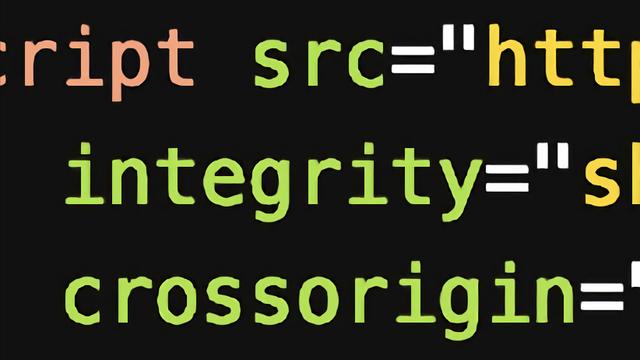利用ChatGPT辅助处理Html数据
使用ChatGPT进行辅助编程首先要清晰描述自己需求,生成代码通过不断调试及优化,最终完成任务。有它,对程序员是好事也是坏事。

一、确认功能
请编程实现以下功能:
1.所有html保存在all文件夹下。
2.对all文件下的所有html进行处理,提取表格中的数据。
3.自动提取表格头,列名以逗号进行分割。
4.处理完毕的文件输出为out+时间格式文件,用于区别不同时间处理的文件。
二、通过chatgpt来进行编程

源代码如下:
import os
import csv
import pandas as pd
from datetime import datetime
from bs4 import BeautifulSoup
def extract_data(file):
with open(file, encoding='utf-8') as f:
soup = BeautifulSoup(f.read(), 'html.parser')
table = soup.find('table')
if not headers:
ths = table.find_all('th')
headers.extend([th.text.strip().replace('n', '') for th in ths])
for tr in table.find_all('tr')[1:]:
tds = tr.find_all(['th', 'td'])
row = []
for td in tds:
text = td.text.strip().replace('n', '').replace(',', ';')
row.Append(text)
if len(row) == len(headers):
rows.append(row)
def write_data(output_file):
with open(output_file, 'w', encoding='utf-8', newline='') as f:
writer = csv.writer(f)
writer.writerow(headers)
writer.writerows(rows)
file_dir = 'all'
html_files = [os.path.join(file_dir, f) for f in os.listdir(file_dir) if f.endswith('.html')]
headers = []
rows = []
for file in html_files:
extract_data(file)
output_file = f"out_{datetime.now().strftime('%Y-%m-%d_%H%M%S')}.csv"
write_data(output_file)
print(f'Data has been saved to {output_file}')
chatgpt给出的解释:
具体地,我们使用BeautifulSoup库解析HTML文件,通过查找<table>标签和其中的<th>、<td>标签来提取数据。其中,我们使用了一个headers列表来保存表格头,使用一个rows列表来保存每一行数据。
在处理每个HTML文件时,我们首先查找表格头,并将其添加到headers列表中。随后,我们依次遍历表格的每一行,并将其中的数据添加到rows列表中,保证了处理结果的准确性。对于每一行数据,我们判断其长度是否与headers列表相等,如果不相等则说明该行数据有误,我们就不予以保存。最终,我们将所有数据保存到一个CSV文件中,输出文件名为out+当前时间.csv,用于区别不同时间处理的文件。
这样,我相信这份代码能够满足您的需求。如有任何问题,请随时和我联系。
三、继续优化
1.提升效率
2.提供进度条显示
3.要及时保存数据,处理意外情况发生
最终代码如下:
import os
import csv
import pandas as pd
from datetime import datetime
from bs4 import BeautifulSoup
from concurrent.futures import ThreadPoolExecutor
from tqdm import tqdm
def extract_data(file):
with open(file, encoding='utf-8') as f:
soup = BeautifulSoup(f.read(), 'html.parser')
table = soup.find('table')
if not headers:
ths = table.find_all('th')
headers.extend([th.text.strip().replace('n', '') for th in ths])
for tr in table.find_all('tr')[1:]:
tds = tr.find_all(['th', 'td'])
row = []
for td in tds:
text = td.text.strip().replace('n', '').replace(',', ';')
row.append(text)
if len(row) == len(headers):
rows.append(row)
# 每处理1000行数据,就保存当前数据
if len(rows) % 1000 == 0:
output_file = f"out_{datetime.now().strftime('%Y-%m-%d_%H%M%S')}_{len(files)}.csv"
write_data(output_file)
files.append(output_file)
rows.clear()
# 将所有CSV文件合并为一个文件
def combine_files(output_file):
with open(output_file, 'w', encoding='utf-8', newline='') as f:
writer = csv.writer(f)
writer.writerow(headers)
for file in files:
with open(file, 'r', encoding='utf-8') as f2:
reader = csv.reader(f2)
next(reader) # 跳过文件头
for row in reader:
writer.writerow(row)
os.remove(file) # 删除临时文件
print('All files have been combined into one CSV file.')
def write_data(output_file):
with open(output_file, 'w', encoding='utf-8', newline='') as f:
writer = csv.writer(f)
writer.writerow(headers)
writer.writerows(rows)
file_dir = 'all'
html_files = [os.path.join(file_dir, f) for f in os.listdir(file_dir) if f.endswith('.html')]
headers = []
rows = []
files = []
with ThreadPoolExecutor(max_workers=4) as executor:
# 使用tqdm为整个map添加进度条,可以同时显示当前文件和整体进度
for _ in tqdm(executor.map(extract_data, html_files), total=len(html_files), desc='Extracting data'):
pass
# 处理剩余数据,并保存到CSV文件中
if rows:
output_file = f"out_{datetime.now().strftime('%Y-%m-%d_%H%M%S')}_{len(files)}.csv"
write_data(output_file)
files.append(output_file)
# 合并所有CSV文件为一个文件
output_file = f"out_{datetime.now().strftime('%Y-%m-%d_%H%M%S')}.csv"
combine_files(output_file)
print(f'Data has been saved to {output_file}')
执行效果:



























